Ijraset Journal For Research in Applied Science and Engineering Technology
- Home / Ijraset
- On This Page
- Abstract
- Introduction
- Conclusion
- References
- Copyright
Efficient Resume Screening Tool
Authors: Santosh Kumar Hatti, Syed Khaleel Ur Rahaman, Syed Mohammed Touqhir, Tuman Tufail V, Dr. Phanindra Reddy K
DOI Link: https://doi.org/10.22214/ijraset.2025.66307
Certificate: View Certificate
Abstract
The \"Efficient Resume Screening Tool\" employs Natural Language Processing (NLP) and Machine Learning (ML) to transform the traditional resume screening process. By automating the analysis of resumes, it identifies candidates best suited for specific job roles, significantly reducing the time and effort associated with manual screening while improving accuracy and consistency. The tool incorporates features such as skill categorization, web-based visualization, and automated report generation, catering to diverse recruitment needs. Using advanced NLP techniques, it extracts, analyzes, and ranks candidate information against predefined job criteria. Machine Learning models ensure adaptability and continuous improvement based on evolving job requirements and industry trends. A user-friendly interface provides recruiters with real-time insights through visual dashboards, simplifying decision-making and ensuring unbiased candidate evaluation. This paper outlines the methodology, system design, implementation, and performance evaluation, demonstrating how the tool enhances screening efficiency and addresses modern recruitment challenges.
Introduction
I. INTRODUCTION
The recruitment process often demands significant manual effort in shortlisting candidates from numerous resumes, leading to inefficiencies, errors, and inconsistencies. To address these challenges, the "Efficient Resume Screening Tool" leverages Natural Language Processing (NLP) and Machine Learning (ML) techniques to automate and optimize the resume screening process. This tool is designed to save time and effort by automating the analysis of resumes, ensuring accurate and consistent shortlisting of candidates based on the desired skills and qualifications. It offers a user-friendly web-based interface that allows recruiters to upload resumes and view detailed analysis results seamlessly.
The system categorizes and ranks candidates based on job-specific requirements, ensuring that only the most relevant profiles are shortlisted. Additionally, it generates comprehensive reports highlighting each candidate's strengths, weaknesses, and overall suitability for the role.
By reducing manual intervention and incorporating advanced algorithms, the tool enhances the recruitment process's efficiency and reliability, addressing common issues like human bias and oversight. With its robust design and real-time data visualization features, this tool provides a modern and scalable solution to streamline recruitment in various industries.
II. LITERATURE REVIEW
A. Automated Resume Screening Using NLP
Automated resume screening leverages Natural Language Processing (NLP) techniques to extract and analyze text data efficiently. NLP models can identify key information such as skills, qualifications, and experience from resumes. This method eliminates the need for manual data extraction, saving significant time in the recruitment process. NLP techniques like Named Entity Recognition (NER) and keyword matching improve the accuracy of candidate evaluation by focusing on relevant attributes. They also ensure consistency in screening, reducing human errors and biases. Studies show that NLP-driven systems can process large datasets quickly while maintaining high precision. This innovation is a cornerstone of modern recruitment tools.
B. Resume Screening Using ML and NLP
The integration of Machine Learning (ML) classifiers with NLP-based feature extraction has transformed resume screening. ML algorithms analyze extracted features such as skills, job titles, and certifications to classify and rank candidates. Supervised and unsupervised learning models continuously improve the accuracy of predictions by learning from historical data. This approach enables the identification of patterns and trends that enhance decision-making. Combining ML with NLP also reduces dependency on manual intervention, allowing recruiters to focus on strategic tasks. As a result, the process becomes faster and more scalable, supporting high-volume recruitment needs. Advanced ML models further ensure that the system adapts to evolving job market requirements.
C. Customized Shortlisting Tools
Smart resume screening tools offer tailored solutions to meet specific recruitment needs. These tools allow recruiters to define job-specific criteria, ensuring that the shortlisting process aligns with organizational goals. Customization features enable the system to adapt to varying roles, industries, and skill requirements. Advanced algorithms ensure precision by mapping candidate profiles to predefined job descriptions.
Such tools enhance the overall efficiency of the hiring process by reducing irrelevant applications. Additionally, recruiters benefit from actionable insights provided by data visualization and reporting features. These tools are particularly effective in dynamic industries with diverse hiring needs.
D. Bias Reduction in Resume Screening
Automation in resume screening plays a critical role in reducing biases that can arise in manual evaluations. By relying on objective algorithms, the system ensures that candidates are shortlisted based solely on their qualifications and relevance to the job. NLP and ML techniques remove subjective elements like name, gender, or ethnicity from the analysis. This promotes diversity and inclusivity in hiring practices, which are crucial for organizational growth. Bias reduction also improves the credibility and fairness of the recruitment process. Research supports that automated systems consistently perform better in promoting unbiased decisions compared to manual methods.
E. Real-Time Resume Analysis Tools
Real-time resume analysis tools empower recruiters to make quicker hiring decisions. These tools process resumes instantly, providing immediate feedback on a candidate's suitability for a role. Using NLP and ML, the system evaluates skills, experience, and job relevance in seconds.
This capability is particularly valuable during high-pressure hiring campaigns or recruitment drives. Real-time analysis also ensures that recruiters can engage with candidates promptly, enhancing the candidate experience. Additionally, such tools can integrate with Applicant Tracking Systems (ATS) to streamline workflows. Real-time solutions mark a significant advancement in the efficiency of recruitment processes.
III. PROBLEM DEFINITION
Recruiters often encounter inefficiencies and errors when manually screening a large volume of resumes, leading to delays in the hiring process and potential misjudgments in candidate selection. Traditional methods are time-consuming, prone to human bias, and can miss key skills or qualifications that are vital for specific roles. This project aims to address these challenges by developing a system that integrates Natural Language Processing (NLP) and Machine Learning (ML) techniques to automate and streamline the resume screening process.
The system will leverage NLP to extract and analyze relevant information from resumes, ensuring accurate identification of skills, qualifications, and experience. By utilizing ML algorithms, the tool will continuously improve its accuracy, learning from previous data to better align with job-specific requirements. The primary objective of this system is to provide precise skill categorization across various job domains, making it easier for recruiters to shortlist the most relevant candidates. Additionally, the tool will help reduce human bias, ensuring that candidates are evaluated objectively based on their qualifications. This project aims to enhance recruitment efficiency, reduce manual workload, and increase the consistency and fairness of the hiring process. By automating the time-intensive tasks of resume screening, the tool will significantly speed up the hiring process while maintaining high levels of accuracy.
IV. METHODOLOGY
A. Data Collection
The first step involves collecting resumes in PDF format from diverse sources, ensuring a broad representation of candidate profiles. These resumes are labeled according to the skills relevant to different job domains, such as Project Management, Backend Development, and Data Science.
The labeled data is then stored in CSV format, which serves as the training dataset for the machine learning model. Each resume is meticulously categorized to enable accurate skill identification during the model training phase.
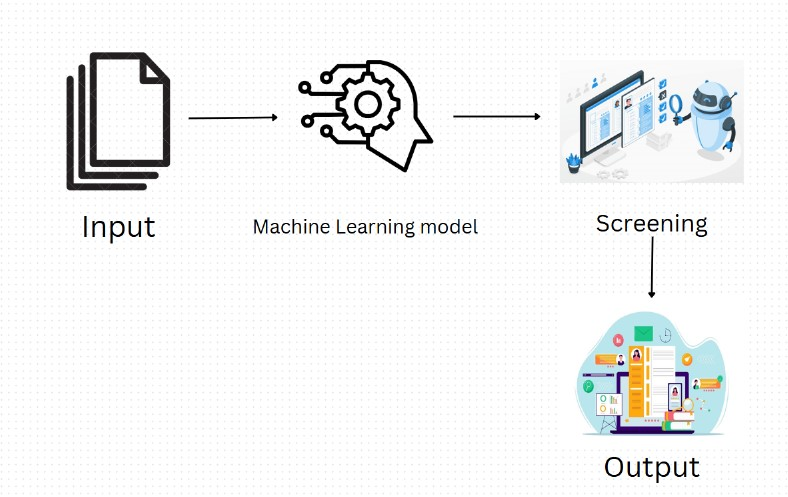
Figure 1 System Architecture
B. Data Collection
The first step involves collecting resumes in PDF format from diverse sources, ensuring a broad representation of candidate profiles. These resumes are labeled according to the skills relevant to different job domains, such as Project Management, Backend Development, and Data Science. The labeled data is then stored in CSV format, which serves as the training dataset for the machine learning model. Each resume is meticulously categorized to enable accurate skill identification during the model training phase.
C. Model Development
The text data from resumes is preprocessed by removing unnecessary noise, such as stopwords and special characters, and tokenizing the content into meaningful units. TF-IDF (Term Frequency-Inverse Document Frequency) is applied to convert the text into numerical representations for machine learning algorithms. The classifiers, including Logistic Regression, Support Vector Machines (SVM), and Neural Networks, are trained on this processed data. Model performance is evaluated using standard metrics such as precision, recall, and F1-score, ensuring that the model can accurately predict relevant skills from candidate resumes.
D. Backend Development
The backend of the system is developed using Flask, a lightweight Python web framework, to manage server-side operations. Functionalities for uploading resumes and extracting text from PDF documents are incorporated. The machine learning model is integrated into the backend to facilitate the prediction of candidate skills in real-time. This ensures seamless interaction between the user interface and the model for skill analysis.
E. Frontend Development
For the frontend, HTML templates are created to allow recruiters to upload resumes and view the results. Bootstrap is used to design a responsive and user-friendly interface that adapts to different screen sizes. The results page includes visualizations of skill distribution across candidates and a graphical representation of shortlisted candidates, providing recruiters with clear insights for decision-making.
V. RESULTS AND EVALUATION
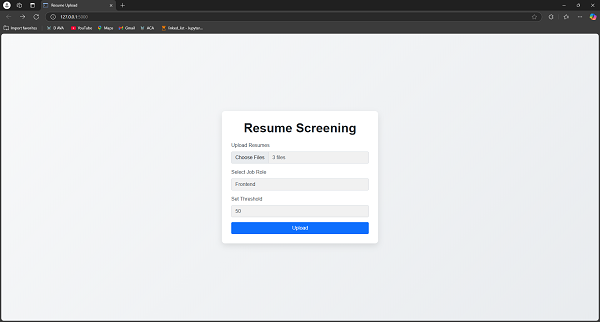
Figure 2 Home Page
The first image showcases the resume upload interface, where the user is prompted to select and upload their resume file. The upload section specifically accepts .ppt files, ensuring that only valid PowerPoint presentations are processed. If the user attempts to upload a file in an unsupported format, an error message is displayed, informing them of the correct format requirement. Once a valid file is chosen, the system displays a preview of the selected file or its name, indicating successful file selection. A clearly labeled "Submit" button enables the user to initiate the processing of their resume. Upon clicking, the file is prepared for analysis, and a confirmation message is shown to reassure the user that their file is ready for processing.
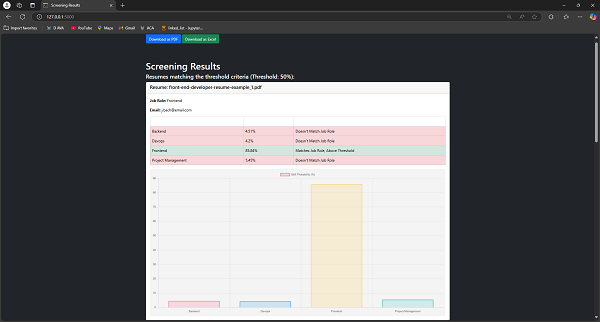
Figure 3 Resume Output with Skill Categories and Bar Chart
After the resume is uploaded and analyzed, the second image presents the processed output. The extracted skills are categorized into various sections, such as technical skills, communication, leadership, etc. These categories help users quickly identify their areas of expertise. Each skill category is clearly labeled, and a list of specific skills associated with that category is displayed. To enhance the presentation, a bar chart visualizes the proficiency levels for each skill category, with the X-axis representing different skill groups and the Y-axis showing proficiency levels like beginner, intermediate, and advanced. This chart allows users to easily compare their strengths across different skill categories. The layout is clean and structured, providing a user-friendly overview of the candidate’s skill
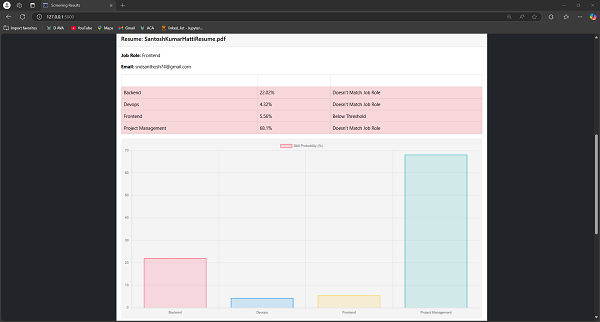
Figure 4 Email Sent with Result Using SMTP
Once the resume is processed, the system proceeds to send the results via email. The third image shows the process of preparing the results for emailing. The user is prompted to enter the email address where they wish to receive their resume analysis results. After the email address is entered, the system uses SMTP (Simple Mail Transfer Protocol) to send the email. A confirmation message appears once the email is successfully sent, assuring the user that the results have been delivered. The email contains a summary of the resume analysis, including the categorized skills and a visual representation of the proficiency levels in the form of the bar chart. The user is notified promptly once the email has been dispatched.
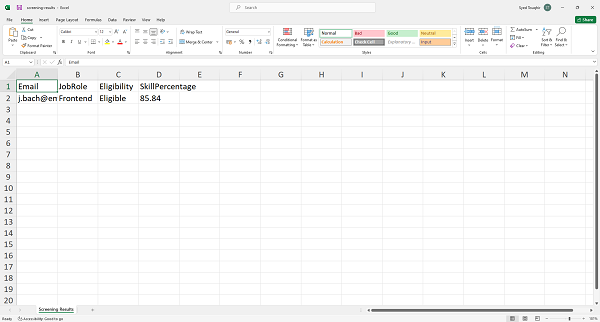
Figure 5 Enable Download of Results as PDF and Excel
The final image illustrates the feature that allows users to download their results in both PDF and Excel formats. Two download buttons are provided: one for PDF and another for Excel. By clicking the PDF button, the user receives a downloadable PDF version of the resume analysis, preserving the layout and formatting for easy reading. Similarly, the Excel button generates a downloadable spreadsheet containing the detailed skill categories and their respective proficiency levels, allowing users to manipulate or analyze the data further. After a successful download, the user is presented with a confirmation message. The files are stored with meaningful names to ensure easy identification, and users can choose to download either format, depending on their preference or need
Conclusion
The \"Efficient Resume Screening Tool\" offers a practical and innovative solution to streamline the recruitment process. By incorporating Natural Language Processing (NLP) and Machine Learning (ML) techniques, the tool enhances the accuracy and efficiency of candidate shortlisting, reducing the manual effort involved in traditional methods. Key strengths of the system include its ability to analyze resumes comprehensively and generate detailed insights. This ensures that recruiters can make informed decisions, leading to a fair and consistent hiring process. The automated approach minimizes biases and increases scalability for handling large volumes of applications. The tool is designed to adapt to dynamic recruitment needs, making it a valuable asset for organizations. Its reliability in understanding diverse skill sets ensures an inclusive evaluation of candidates. Future enhancements could include expanding compatibility to handle varied resume formats, improving contextual understanding of skills, and integrating additional features such as real-time matching to job descriptions. These advancements will further refine the system’s effectiveness and usability, ensuring it stays ahead in addressing the evolving demands of the recruitment landscape. In conclusion, the tool exemplifies how cutting-edge technologies like NLP and ML can revolutionize recruitment, making the process more efficient, transparent, and equitable for all stakeholders.
References
[1] D. L. Padmaja, C. Vishnuvardhan, G. Rajeev, and K. N. S. Kumar, “Automated Resume Screening Using Natural Language Processing,” Journal of Emerging Technologies and Innovative Research (JETIR), vol. 10, no. 3, pp. 100–104, 2023, doi: 10.32628/ISSN2349-5162. [2] B. Kinge, S. Mandhare, P. Chavan, and S. M. Chaware, “Resume Screening using Machine Learning and NLP: A proposed system,” International Journal of Scientific Research in Computer Science, Engineering and Information Technology, vol. 8, no. 2, pp. 253–258, 2022, doi: 10.32628/CSEIT228240. [3] P. Tijare, M. Waseem, M. A. Sherani, K. S. Kumargari, and K. P., “A smart resume screening tool for customized shortlisting,” ITM Web of Conferences, vol. 56, article 04001, 2023, doi: 10.1051/itmconf/20235604001. [4] D. Kavitha, Padmavathi B, Sushanth V, Yashwanth P, and Yuvaraj R, “Screening and Ranking Resumes using Stacked Model,” International Journal for Research in Applied Science & Engineering Technology (IJRASET), vol. 11, issue II, pp. 1152-1158, Feb. 2023, doi: 10.22214/ijraset.2023.48870.
Copyright
Copyright © 2025 Santosh Kumar Hatti, Syed Khaleel Ur Rahaman, Syed Mohammed Touqhir, Tuman Tufail V, Dr. Phanindra Reddy K. This is an open access article distributed under the Creative Commons Attribution License, which permits unrestricted use, distribution, and reproduction in any medium, provided the original work is properly cited.

Download Paper
Paper Id : IJRASET66307
Publish Date : 2025-01-07
ISSN : 2321-9653
Publisher Name : IJRASET
DOI Link : Click Here
 Submit Paper Online
Submit Paper Online

